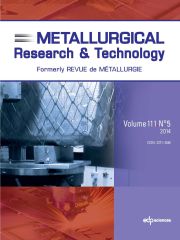No CrossRef data available.
Article contents
The research on structural materials: current trends and prospective applications
Published online by Cambridge University Press: 25 November 2004
Abstract
The research on structural materials, notably in metallurgy, was the pioneering discipline of the materials science. Besides “traditional” materials as metallic alloys and polymers which are following up their progresses, the materials of wide uses and large diffusion, like concrete, rubber, textiles, wood, paper and cardboard are now benefiting of the advanced researches allowed by the progresses of the investigation and modelling methods able to provide information on their great complexity linked to the fact they generally are mixtures. High strength materials gain from active researches dealing with experimental studies as well as modelling of the production processes, multiscale approaches of the structures, properties, behaviour and optimized selection providing both scientific advancement and improved applications. “System-materials” are another field of stuctural materials, often in connexion with functionnal materials. Artificially built by putting together elements going from atoms to fibers or particles of different sizes: composites, smart materials, structural nanomaterials have opened the way to wide research perspectives and exiting applications. Interdisciplinar researches on optimized mechanical behaviour, chemical and topological analysis of the microstructure and processes modelling, multiphysics modelling of the behaviour of structures and properties are developed thanks to the advancement of the available instrumentation and calculation facilities. Studies on the implementation of these materials providing an improved control of the performances of the produced parts and objects need a renewed stimulation. Data bases concerning thermodynamic properties as well as kinetics ones, mechanical and thermophysical properties are necessary input data for these approaches and improvements. A continuous enrichment of these bases is of vital importance.
- Type
- Research Article
- Information
- Metallurgical Research & Technology , Volume 101 , Issue 11: Centenaire de la Revue de Métallurgie , November 2004 , pp. 901 - 915
- Copyright
- © La Revue de Métallurgie, 2004


